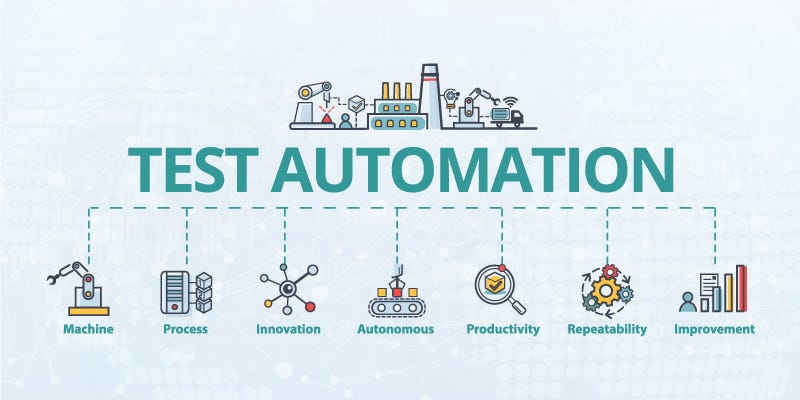From Handbook to Automated Testing: A Comprehensive Guide to Transitioning Smoothly and Efficiently
In the world of software application testing, the change from guidebook to automated processes has actually become a significantly crucial transition for companies seeking to improve efficiency and precision in their testing techniques. The journey from guidebook to automated testing is not without its obstacles, but when come close to tactically and with a clear strategy in mind, the advantages can be significant.
Benefits of Automated Examining
Automated screening supplies various advantages, improving performance and precision in software development processes. Automated tests can be run concurrently on several gadgets and operating systems, dramatically speeding up the screening stage contrasted to hand-operated screening.
In addition, automated screening ensures a higher level of accuracy in discovering flaws. Considering that automated examinations adhere to predefined manuscripts, human mistake is lessened, bring about more trustworthy examination results. Consistency in testing is also improved, as automated examinations implement the very same actions exactly each time they are run. This uniformity is critical in making certain that all capabilities of the software program are completely checked, decreasing the possibility of undetected bugs sliding through to manufacturing.
Choosing the Right Tools

To start with, examine your needs and purposes. Comprehend the scope of your project, the technologies involved, and the ability of your team. This analysis will aid you identify the abilities and functions you require in your testing tools.
Second of all, take into consideration the compatibility of the devices with your existing systems and processes. Seamless assimilation with your existing software program advancement lifecycle is necessary to ensure a smooth change to automation.
Furthermore, assess the scalability and flexibility of the devices. As your testing needs advance, the tools should have the ability to adjust and accommodate adjustments successfully.
Lastly, consider the assistance and community around the devices. Robust assistance and an active customer community can give useful resources and aid when carrying out automated testing. By meticulously taking into consideration these elements, you can select the right tools that straighten with your demands and established the stage for an effective transition to automated testing.
Composing Effective Test Manuscripts

When crafting test manuscripts, it is important to take into consideration the particular requirements of the software index program being checked and ensure that the manuscripts deal with all critical performances. Detailed and clear naming conventions for examination manuscripts and test cases can boost readability and maintainability. Additionally, integrating mistake handling systems within the examination scripts can assist in recognizing and addressing problems without delay.
Additionally, arranging examination manuscripts into modular elements can boost reusability and scalability, decreasing redundancy and improving performance in test script upkeep. Regular evaluations and updates to check manuscripts are essential to equal progressing software application needs and functionalities. By complying with these concepts, testers can develop effective and durable test scripts that add significantly to the success of automated testing procedures.
Integrating Automation Into Workflows
By flawlessly incorporating automated screening tools like Selenium or Appium right into dig this the software application growth lifecycle, teams can achieve faster comments on code changes, leading to quicker insect discovery and resolution. This assimilation allows for continual testing throughout the growth process, making sure that any problems are identified early on, resulting in higher software program high quality. Correct integration of automation devices needs collaboration in between growth, testing, and procedures groups to establish a unified process that maximizes efficiency and efficiency in delivering top notch software products.
Making Sure a Smooth Shift
Efficiently transitioning to automated testing includes thorough planning and careful execution to take full advantage of and decrease disruptions efficiency in the software application growth process - automation testing. To ensure a smooth shift, it is important to begin by conducting a complete analysis of the existing screening procedures and identifying areas where automation can bring the most significant benefits. Engaging with all stakeholders early on at the same time, including developers, testers, and project managers, is essential for gathering support and buy-in for the automation initiative
Communication is essential during this transition stage. Clear interaction of the objectives, benefits, and expectations of automated testing aids to take care of any kind of resistance or problems that might develop. Furthermore, supplying sufficient training and resources for team participants to upskill in automation devices and methods is crucial for making sure a successful change.

Verdict
Finally, transitioning from manual to automated testing provides various benefits, consisting of enhanced effectiveness and dependability. By choosing the proper devices, creating reliable examination manuscripts, and incorporating automation flawlessly right into operations, companies can make certain a smooth and effective transition. It is vital to accept automation as a useful possession in software application testing processes to improve overall quality and performance.
In the world of find more info software program screening, the shift from handbook to automated processes has actually ended up being a progressively important transition for organizations looking for to improve effectiveness and accuracy in their screening techniques. Automated tests can be run simultaneously on numerous gadgets and operating systems, significantly speeding up the testing stage contrasted to manual screening. Uniformity in testing is additionally boosted, as automated tests execute the very same steps precisely each time they are run.To make certain the successful implementation of picked testing tools, the creation of reliable test scripts plays an essential function in validating the capability and performance of automated procedures - automation testing. By complying with these concepts, testers can produce robust and efficient test manuscripts that add substantially to the success of automated testing procedures